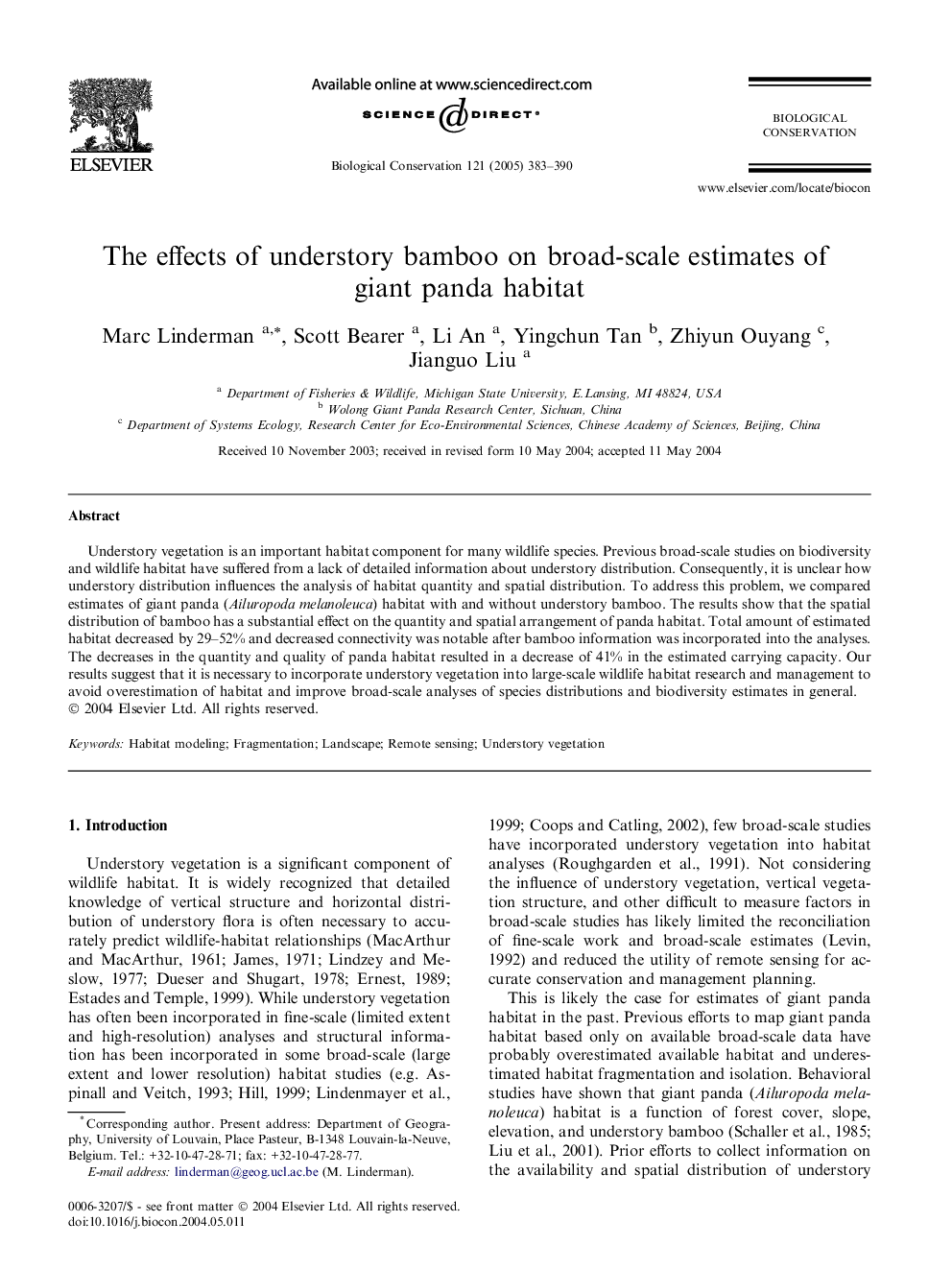| Article ID | Journal | Published Year | Pages | File Type |
|---|---|---|---|---|
| 9446075 | Biological Conservation | 2005 | 8 Pages |
Abstract
Understory vegetation is an important habitat component for many wildlife species. Previous broad-scale studies on biodiversity and wildlife habitat have suffered from a lack of detailed information about understory distribution. Consequently, it is unclear how understory distribution influences the analysis of habitat quantity and spatial distribution. To address this problem, we compared estimates of giant panda (Ailuropoda melanoleuca) habitat with and without understory bamboo. The results show that the spatial distribution of bamboo has a substantial effect on the quantity and spatial arrangement of panda habitat. Total amount of estimated habitat decreased by 29-52% and decreased connectivity was notable after bamboo information was incorporated into the analyses. The decreases in the quantity and quality of panda habitat resulted in a decrease of 41% in the estimated carrying capacity. Our results suggest that it is necessary to incorporate understory vegetation into large-scale wildlife habitat research and management to avoid overestimation of habitat and improve broad-scale analyses of species distributions and biodiversity estimates in general.
Related Topics
Life Sciences
Agricultural and Biological Sciences
Ecology, Evolution, Behavior and Systematics
Authors
Marc Linderman, Scott Bearer, Li An, Yingchun Tan, Zhiyun Ouyang, Jianguo Liu,
